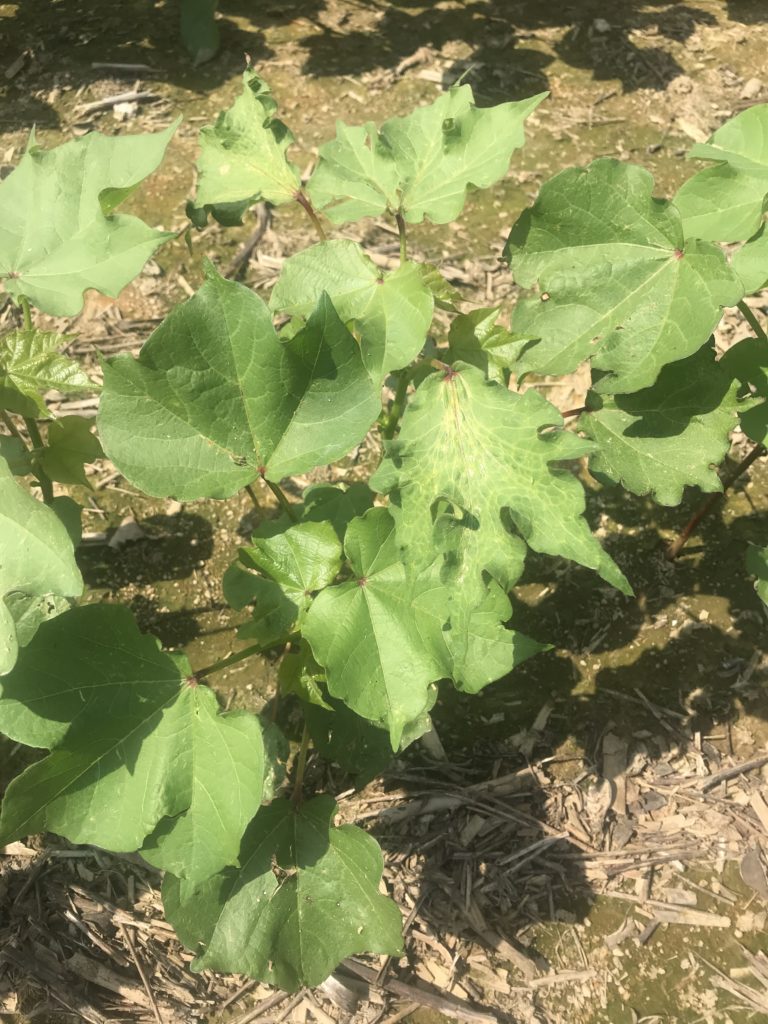I’ve received several calls this week requesting information on whether or not to keep injured cotton and management after the injury. In this brief article, I will cover the ‘keep or discard’ decision and briefly cover best management practices after the decision to keep the crop has been made. Depending on your situation, you may need to document the injury and/or keep a portion of the field to determine the yield penalty. That information is beyond the scope of this article but should be available from your insurance agent or attorney. Continue reading
Recent Updates
Supply and Demand Estimates and Profitability Outlook
Do I Need an Insecticide Seed Treatment in Soybeans Following a Cover Crop?
Dr. Scott Stewart discusses his latest research on the impact of seed treatments and burndown timing in soybeans planted behind a cover crop.
Managing the moving parts of a breakeven price
What do you consider the breakeven price to be for a bushel of soybeans?
This was a question posed to candidates at a Tennessee gubernatorial forum in early May in the heart of soybean country in Northwest Tennessee.
Realistically, there is no correct answer but a range of acceptable answers depending on a farmer’s individual situation. Considering there are farmers in Tennessee and the U.S. that may struggle with answering the question, expecting gubernatorial candidates to be on top of such an answer may be a stretch. Regardless, most acquitted themselves well with their answers and did show they realize the importance of soybeans and agriculture in Tennessee. Continue reading at Southeast Free Press.
Section 18 Approved for Sivanto in Sweet Sorghum
The EPA has approved Tennessee’s Section 18 request for Sivanto (a.k.a. Sivanto prime) in sweet sorghum for control of sugarcane aphid. This product is already fully labeled on grain sorghum, but requires an emergency use exemption is sweet sorghum. Sivanto is the only insecticide labeled in sweet sorghum for control of the sugarcane aphid. Specific use requirements are listed below. Continue reading
Tennessee Wheat Growers Expect a Record High Yield
USDA, NASS, Tennessee Field Office
Debra Kenerson, State Statistician
Released: June 12, 2018
Tennessee Wheat Growers Expect a Record High Yield
Tennessee farmers expect to harvest 22.5 million bushels of winter wheat during 2018 according to the Tennessee field office of USDA’s National Agricultural Statistics Service. The expected crop for 2018 would be up 17 percent from the previous year. The forecast was based on crop conditions as of June 1 and increased 4 percent from the May forecast. Growers expect a yield of 75.0 bushels per acre, up 5.0 bushels from 2017 and up 3.0 bushels from May. Continue reading
Tennessee Weekly Crop & Weather Report
FARMERS RETURN TO THEIR FIELDS
Dry weather prevailed over the state last week, allowing farmers to get back into the field. Corn planting wrapped up, while significant progress was made on cotton and soybean planting. Hay producers put up a lot of hay last week, but some were reporting their hay was of poorer quality than usual due to the lateness of the first cutting. A few livestock producers reported that the higher temperatures and humidity were putting stress on their animals. There were 6.5 days suitable for field work. Topsoil moisture was 2 percent very short, 14 percent short, 78 percent adequate, and 6 percent surplus. Subsoil moisture was 2 percent very short, 10 percent short, 79 percent adequate, and 9 percent surplus. Continue reading at TN_06_11_18. The U.S. Crop Progress report can be read at CropProg-06-11-2018.
Impact of Time of Day of Herbicide Application
UTIA research shows that avoiding spraying certain herbicides in the early morning or late evening is not only better for herbicide stewardship but also better for weed control.


